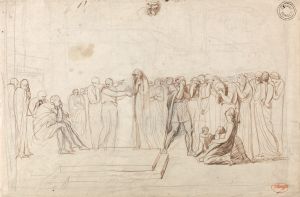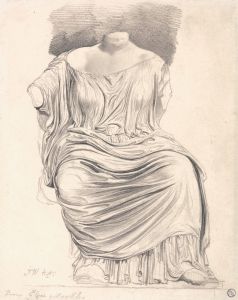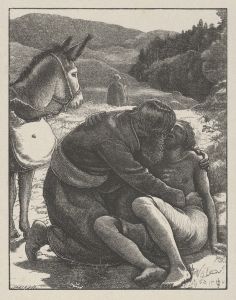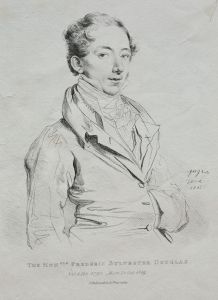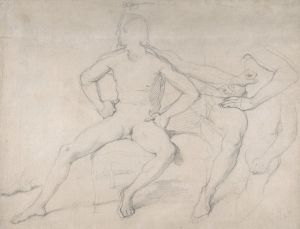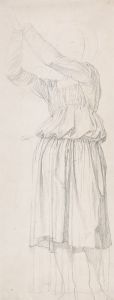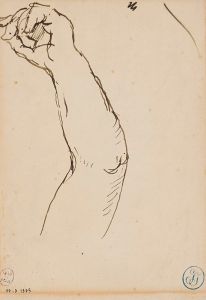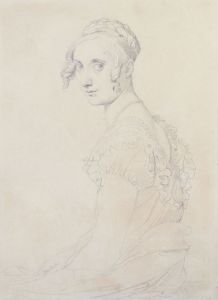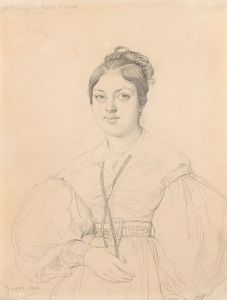
Angelica saved by Ruggiero
A hand-painted replica of Jean Auguste Dominique Ingres’s masterpiece Angelica saved by Ruggiero, meticulously crafted by professional artists to capture the true essence of the original. Each piece is created with museum-quality canvas and rare mineral pigments, carefully painted by experienced artists with delicate brushstrokes and rich, layered colors to perfectly recreate the texture of the original artwork. Unlike machine-printed reproductions, this hand-painted version brings the painting to life, infused with the artist’s emotions and skill in every stroke. Whether for personal collection or home decoration, it instantly elevates the artistic atmosphere of any space.
Jean Auguste Dominique Ingres, a prominent French Neoclassical painter, created the artwork "Angelica Saved by Ruggiero" in 1819. This painting is based on a scene from the epic poem "Orlando Furioso," written by Ludovico Ariosto in the early 16th century. The poem is a chivalric romance that combines elements of fantasy, adventure, and romance, and it was highly influential in the Renaissance and beyond.
The specific scene depicted by Ingres is one of the most dramatic and romantic episodes in "Orlando Furioso." It portrays the moment when the knight Ruggiero rescues the princess Angelica, who is chained to a rock as a sacrifice to a sea monster. This narrative is reminiscent of the classical myth of Andromeda and Perseus, which has been a popular subject in Western art.
Ingres's painting captures the tension and drama of the moment. Ruggiero, mounted on a winged horse named Hippogriff, swoops down to save Angelica. The composition is dynamic, with Ruggiero's figure in motion, emphasizing his heroism and the urgency of the rescue. Angelica, depicted as a classical beauty, is shown in a vulnerable position, highlighting her need for rescue and adding to the romantic tension of the scene.
Ingres was known for his precise draftsmanship and his ability to convey texture and form, and these skills are evident in "Angelica Saved by Ruggiero." The painting showcases his meticulous attention to detail, from the intricate rendering of the Hippogriff's feathers to the delicate portrayal of Angelica's skin and hair. The use of color and light in the painting enhances the drama, with the contrast between the dark, turbulent sea and the luminous figures of Ruggiero and Angelica.
This work reflects Ingres's interest in historical and literary subjects, as well as his admiration for the art of the Renaissance. Ingres often drew inspiration from classical themes and sought to revive the grandeur and clarity of Renaissance art in his own work. "Angelica Saved by Ruggiero" is a testament to his ability to blend classical influences with his own artistic vision.
The painting was exhibited at the Salon of 1819, where it received mixed reviews. Some critics praised Ingres's technical skill and the painting's dramatic composition, while others found fault with its departure from strict Neoclassical ideals. Despite the initial mixed reception, Ingres's work has since been recognized as a significant contribution to 19th-century art, and "Angelica Saved by Ruggiero" is considered an important example of his oeuvre.
Today, "Angelica Saved by Ruggiero" is housed in the Louvre Museum in Paris, where it continues to be admired for its technical excellence and its evocative portrayal of a classic literary scene. The painting remains a testament to Ingres's skill as a painter and his ability to bring to life the drama and romance of literary and historical subjects.







